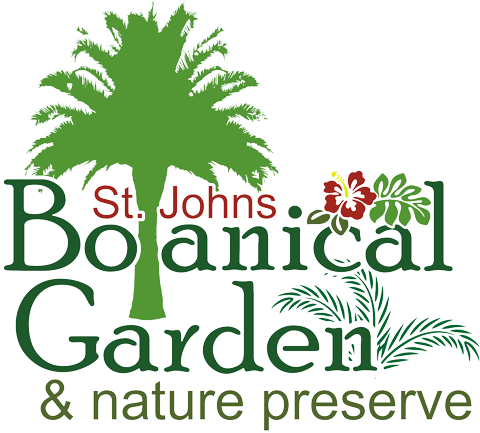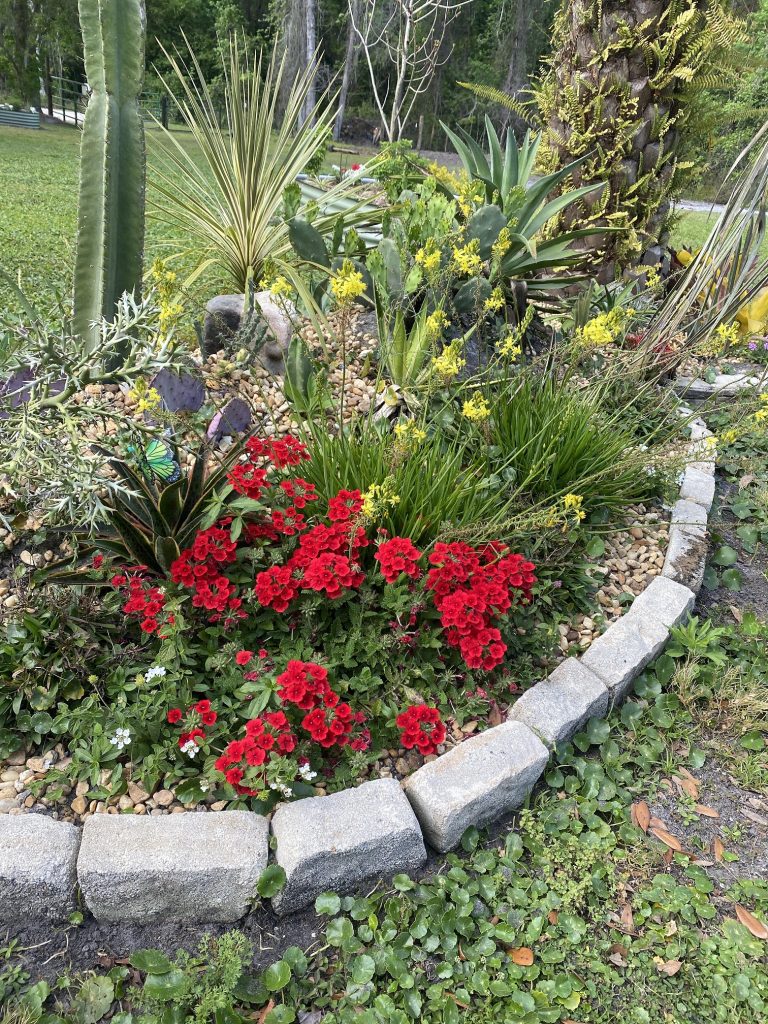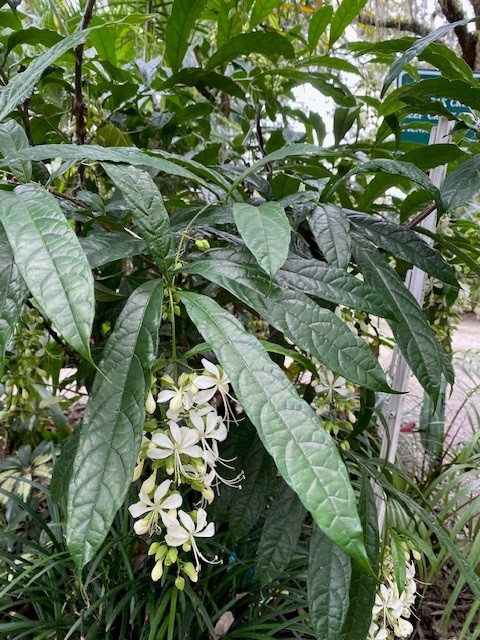Bridal Veils Clerodendrum
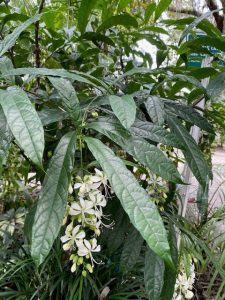
Let’s look at the Bridal Veils Clerodendrum, blooming right now. The garden is looking especially beautiful now after all the storms have finally gotten past us and the temps are getting cooler.
Head on down to get a look at this beauty. It’s located very near the main entrance and to the right. It’s a tall shrub that likes to be in well-draining soil but with lots of organic matter still, not sand. Enjoys dappled sunlight and a little fertilizer each month. It’s not a bib fan of cold weather though. Would need a cover up if it gets in the 20’s, but don’t fret if it gets burned . Give a trim and it will come back pretty as ever.
Come see us real soon!
Article and pictures by Libby Luedeke.
Cycads
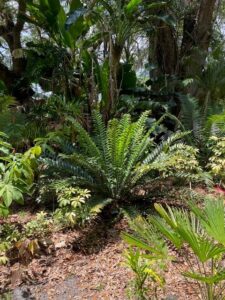
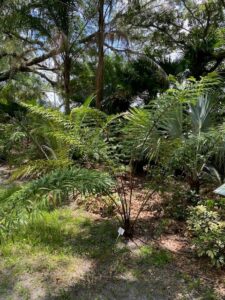
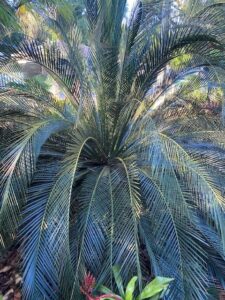
Cycads /ˈsaɪkædz/ are seed plants that typically have a stout and woody trunk with a crown of large, hard, stiff, evergreen and (usually) pinnate leaves. They are a group of seed plants that have existed for around 300 million years, making them the oldest living lineage of seed plants. The species are either male or female. Cycads vary in size from having trunks only a few inches to several feet tall. They typically grow very slowly and live very long. Because of their superficial resemblance, they are sometimes mistaken for palms or ferns, but they are not closely related to either group.
Here at St. Johns Botanical Garden & Nature Preserve, we are fortunate to have a wide variety of cycads from all over the world. Cycads all over the world are in decline, with four species on the brink of extinction and seven species having fewer than 100 plants left in the wild due to destruction and enthusiastic plant collectors.
You will find cycads scattered throughout the garden, but I have concentrated on three. The Encephalartos whitelockii from Africa, Cycas Debaoensis from China, and the Macrozamia moorei from Australia. All beautiful cycads, but very different in leaf shape. You’ll find that there are even more different shapes as you walk the garden. See how many you can find and strive to learn more about how different they are. Great additions to any garden.
Article and pictures by Libby Luedeke.
Billbergia
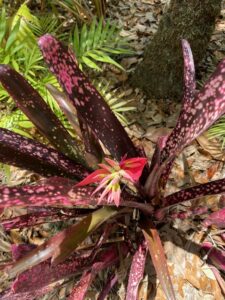
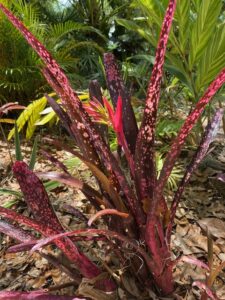
Have you ever heard of a Billbergia? Well, you have now. Billbergias are a bromeliad that covers a varied and beautiful range of bromeliads. We have many varieties here at the garden and many are blooming right now. The good news is the blooms can last for weeks. They prefer humidity which Florida has in abundance and likes sandy, well-draining soil. They don’t require a lot of water either. Billbergias like some full sun, but dappled light works as well. They can handle temps as low as 30 degrees.
The blooms can vary from light pinks and blues to bright reds and can make a striking addition to your garden. Come see if you can spot the beauty pictured here at St. John’s Botanical. Here’s a hint, look toward the exit. Looking forward to seeing you there!
Article and pictures by Libby Luedeke.
Dyckia “Silver Superstar”
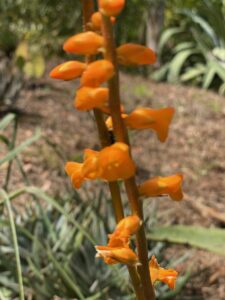
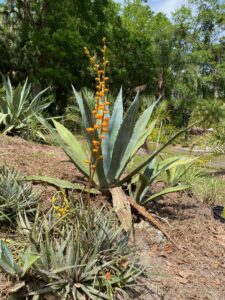
This an evergreen bromeliad with silvery foliage and bright orange flowers. It can be found on Silver Hill. Grows best in zones 9A to11 and is very drought tolerant. Gets up to about 6″ tall and 12″ wide, so it also makes a great container plant as well. Very slow growing, it can handle temps down to 20 degrees Fahrenheit. We have a couple of other Dyckias as well, another one will be blooming soon, so come see them now in their full glory!
Article and pictures by Libby Luedeke.
Phoenix Rupicola
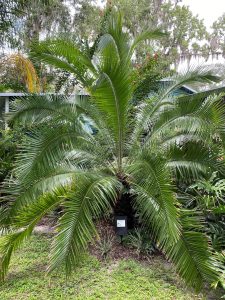
Welcome once again to the plant of the month. This is always a challenge as there are so many wonderful plants in the garden, but I chose a stunner and a personal favorite of mine that you will find near the main building. I am sure you will find it. The Phoenix rupicola, a beautiful, tropical palm that is very hardy and, in my opinion, stunningly beautiful with a side of extremely painful if not handled properly. Also known as the cliff date palm in its natural habitat it would live in east Himalaya’s to West Bengal in India. Loves warm, wet forest or more open areas on steep rocky hillsides, ravines and cliffs from 300 to 1220 m.
Generally, only grows to about 20 ft tall which is relatively shorter than most of its relatives. Has a nice clean trunk that doesn’t retain its old leaves. The frond are long, up to 10 ft and has a nice round canopy making it a graceful looking palm. You can eat the purplish fruit, but it is very thin. Prefers sun but does well in shade and is drought tolerant. Ours has handled lows in the 20’s with some burn but does well. Definitely an ornament for your garden.
Article and pictures by Libby Luedeke.

